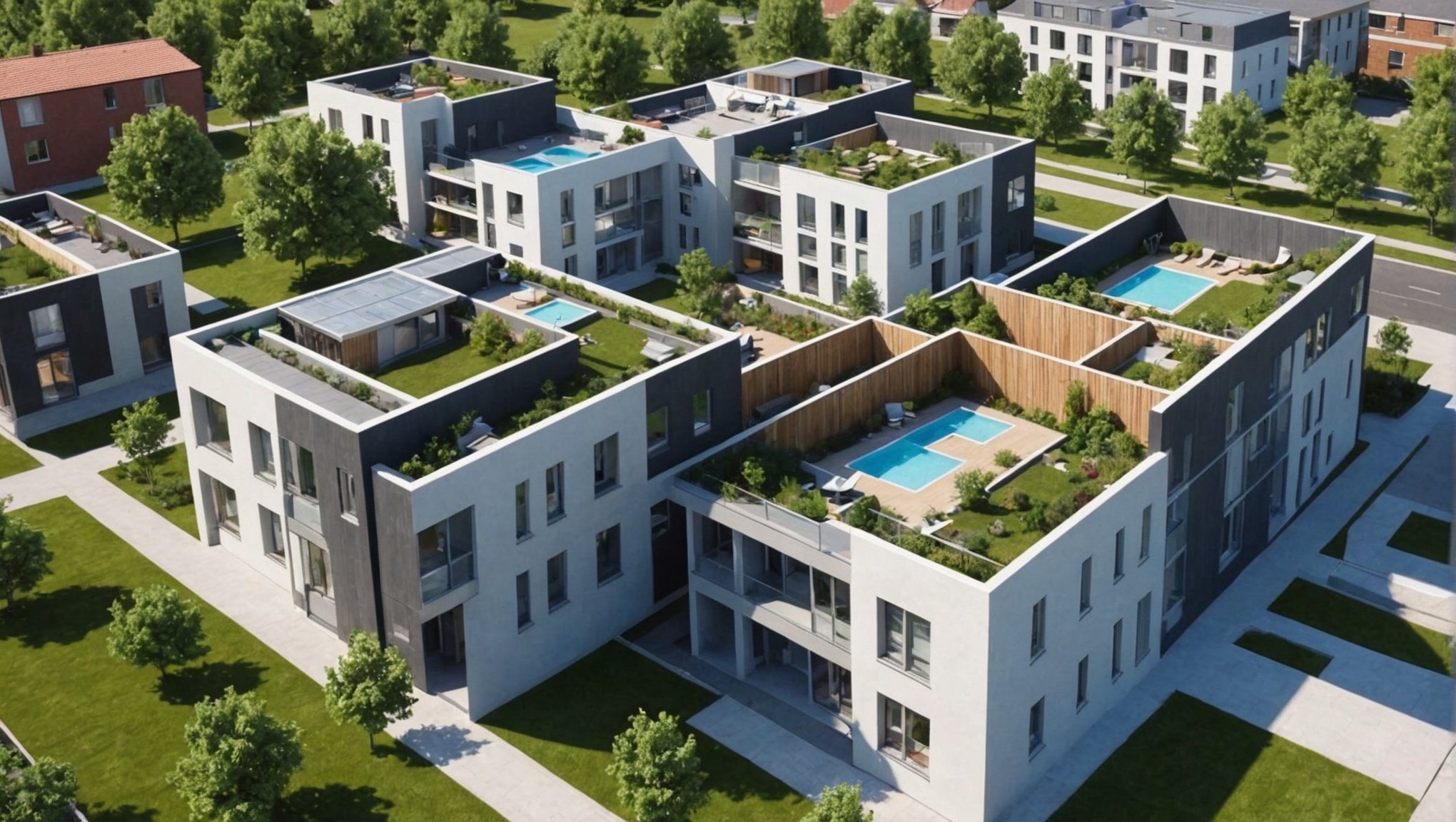Understanding the Need for Affordable Housing
The affordable housing crisis profoundly impacts millions, particularly low-income families. Rising property costs outpace income growth, leaving many grappling with housing insecurity. While supply stagnates, demand surges, creating a widening gap in housing availability.
Statistics reveal that over 11 million families in the United States allocate more than half their income to rent, markedly increasing their vulnerability to financial instability. This lack of affordable homes contributes to the housing crisis, undermining community stability and development. The economic balance of a community is disrupted when families must prioritise hefty housing costs over essential needs like education, healthcare, and food.
Also to discover : Navigating Hurdles: The Challenges of Integrating Smart Home Tech in Rental Properties
For low-income families, the soaring costs can lead to frequent relocations, which degrade community ties and social networks. Children from these families face educational disruptions, while their parents experience escalating stress levels, which can adversely affect their productivity and overall well-being.
Efforts to combat this crisis must focus on sustainable development and equitable resource allocation. Expanding affordable housing availability can bolster economic diversity and foster environments where families thrive. Addressing the root causes of the housing crisis with practical solutions will enable long-term, positive transformations, equipping communities to regain stability amid challenging economic conditions.
In parallel : Navigating the Hurdles: Key Challenges in Brownfield Real Estate Development
Innovative Financing Models
In recent years, financing models have evolved to offer more affordable housing solutions. One notable model is crowdfunding, which has opened doors for individuals to contribute financially to housing projects without needing to be part of large investment groups. This model allows the public to directly support housing initiatives and become stakeholders in projects that significantly impact communities.
Impact investing is another powerful tool, focused on generating a positive social or environmental impact alongside financial returns. Investors in this space are often driven by the mission to address housing inequalities, making it easier for housing projects to secure crucial funding. Such investments bridge the gap between traditional funding and the growing demand for socially responsible business practices.
Additionally, collaborations with local businesses can be pivotal. These partnerships leverage community ties and resources, stimulating local economies while addressing housing needs. Businesses participating in these initiatives often benefit from increased local support and enhanced reputations as socially responsible entities.
Nonprofit funding remains a vital component in this ecosystem, supporting projects that might not attract private investors due to lower profit margins. By embracing a diverse range of financing models, stakeholders can contribute to more robust and sustainable affordable housing solutions.
Community-Based Initiatives
Community initiatives in housing development are instrumental in creating sustainable and impactful living environments. Successful case studies of grassroots housing projects provide excellent models. For instance, the Ashford Co-Op in Bristol is a shining example of how community members can come together to transform neglected spaces into thriving residential areas. Their efforts highlight the benefits and challenges of engaging locals, showcasing how essential local support and involvement can lead to productive outcomes.
Engaging community members in both the planning and building processes is crucial. It ensures that the projects reflect the unique values and needs of the area, creating a greater sense of ownership and satisfaction among residents. For example, participatory design sessions are frequently used to gather input from residents, ensuring the final development aligns with community aspirations.
Volunteerism plays a significant role. Volunteers not only assist in construction but also help in establishing social bonds among neighbours, fostering a stronger community spirit. Initiatives like the Habitat for Humanity engage volunteers in hands-on work, providing housing solutions while building community ties.
Incorporating local voices and harnessing volunteer efforts transform housing projects, making them more than mere physical developments. They become communal achievements, celebrated and sustained by the very people they serve.
Public-Private Partnerships
In the realm of housing, public-private partnerships are collaborations where government entities and private sector players work hand-in-hand to address housing challenges. This collaboration is pivotal for developing affordable housing projects. These partnerships leverage the strengths and resources of both sectors to create efficient, long-lasting solutions.
An example of successful collaborative housing solutions is the partnership between local governments and private developers to construct affordable housing units. By aligning community needs with developer capabilities, they ensure that projects are not only feasible but also tailored to the community’s specific requirements. A striking case is found in Copenhagen, where the city’s strategy involved integrating sustainable practices with economic incentives for private developers.
Resource sharing is a core benefit of these partnerships. It allows access to a wider range of funding, expertise, and innovative technologies. Governments can benefit from the private sector’s agility, technological advancements, and capital, while private entities gain access to public land, regulatory support, and community insights. This synergy simplifies cumbersome processes, reduces costs, and shortens timelines, making public-private partnerships an attractive pathway for tackling housing affordability challenges.
Creative Design and Construction Techniques
The evolution of sustainable housing melds artistic design with environmental responsibility. This approach to housing emphasizes efficiency, harmonious integration with the environment, and affordability. One of the emerging trends is the use of modular and prefabricated housing. These options are not only cost-effective but also minimize construction time and waste. By assembling homes in segments, developers can ensure quality and control over building materials, which aligns with sustainable construction practices.
Moreover, incorporating recycled materials into the building process is at the forefront of sustainable housing innovations. It significantly reduces the environmental footprint by repurposing waste products, which would otherwise contribute to landfill.
In terms of design, architectural innovation plays a pivotal role in making homes both space-efficient and affordable. Creative layouts and multi-functional spaces allow for the maximization of limited areas without compromising on comfort. For instance, built-in storage solutions and convertible furniture enable smaller homes to offer the functionality of larger spaces.
To summarise, the integration of design innovation, low-cost construction techniques, and material recycling heralds a new age of housing that meets both economic and environmental needs. These practices not only save money but also promote a more sustainable living environment for future generations.
Overcoming Challenges in Implementation
Navigating the implementation barriers to affordable housing development can be daunting. Common challenges include regulatory and zoning obstacles that add complexity to projects. Often, these involve stringent land-use laws, convoluted approval processes, and resistance from local communities.
To address these, collaborative strategies between developers and local governments have proven effective. For instance, streamlining approval procedures reduces time and costs significantly. An exemplary solution is the adoption of flexible zoning laws that allow for higher-density builds and mixed-use developments. This not only maximizes land use but also aligns with urbanisation trends.
Additionally, maintaining sustainability and affordability over the long term is critical. Innovative financing options, like low-interest loans and subsidies, play a crucial role here. These financial aids enable developers to control costs and maintain lower rents for tenants. Furthermore, incorporating green technologies such as solar panels and energy-efficient systems can lower operational costs, providing lasting economic benefits to both residents and developers.
Lastly, engaging with local communities early in the process helps overcome housing challenges related to public opposition. Open dialogue and community consultations create a shared vision for the development, fostering acceptance and cooperation. Through these combined efforts, the path to achieving sustainable, affordable housing becomes more navigable.
Case Studies of Successful Housing Projects
Exploring case studies of housing initiatives highlights the innovative approaches taken to create impactful and sustainable developments. Notably, successful projects have thrived without relying on public funding, showcasing resourceful management and innovative financing.
One key example is a project in a metropolitan area that utilised private investments and community support to develop affordable housing. This initiative exemplifies best practices like engaging local stakeholders and forming strategic partnerships. By prioritizing community input, developers ensured that the project met specific local needs.
A critical component of understanding these initiatives is through impact assessment. It involves quantifying social benefits—such as improved living conditions and community cohesion—and the economic ripple effects on local businesses. Metrics used include increased employment rates, reduced crime levels, and enhanced access to services. These indicators demonstrate that the influence of successful projects extends beyond housing units, embedding positive change within communities.
Lessons learned from these successful projects emphasize the importance of transparent communication, robust management structures, and adaptable project models. Future housing efforts can build upon these insights to develop scalable, efficient approaches tailored to specific demographic and regional exigences. Through examining case studies, we can better understand what practices lead to meaningful and sustained success in housing developments.






